The 6 Steps of the Engineering Design Process & An Example
What is the engineering design process?
The 6 engineering design process steps
Engineering process example: The Egg Drop Challenge
Engineering challenge projects
Engineering projects for students
What is the Engineering Design Process?
The engineering design process is how engineers build better products or write computer programs that solve real-world problems. It is not a rigid process but rather a flexible one that allows for going back and forth between steps or combining several steps together. The engineering design process steps help engineers stay focused. They continuously test and improve their design solution repeatedly to create the best solution for a given problem.
How is the engineering design process different from the scientific method?
The engineering design process is a way to solve problems and create useful things, while the scientific method is a way to understand how things work in nature.
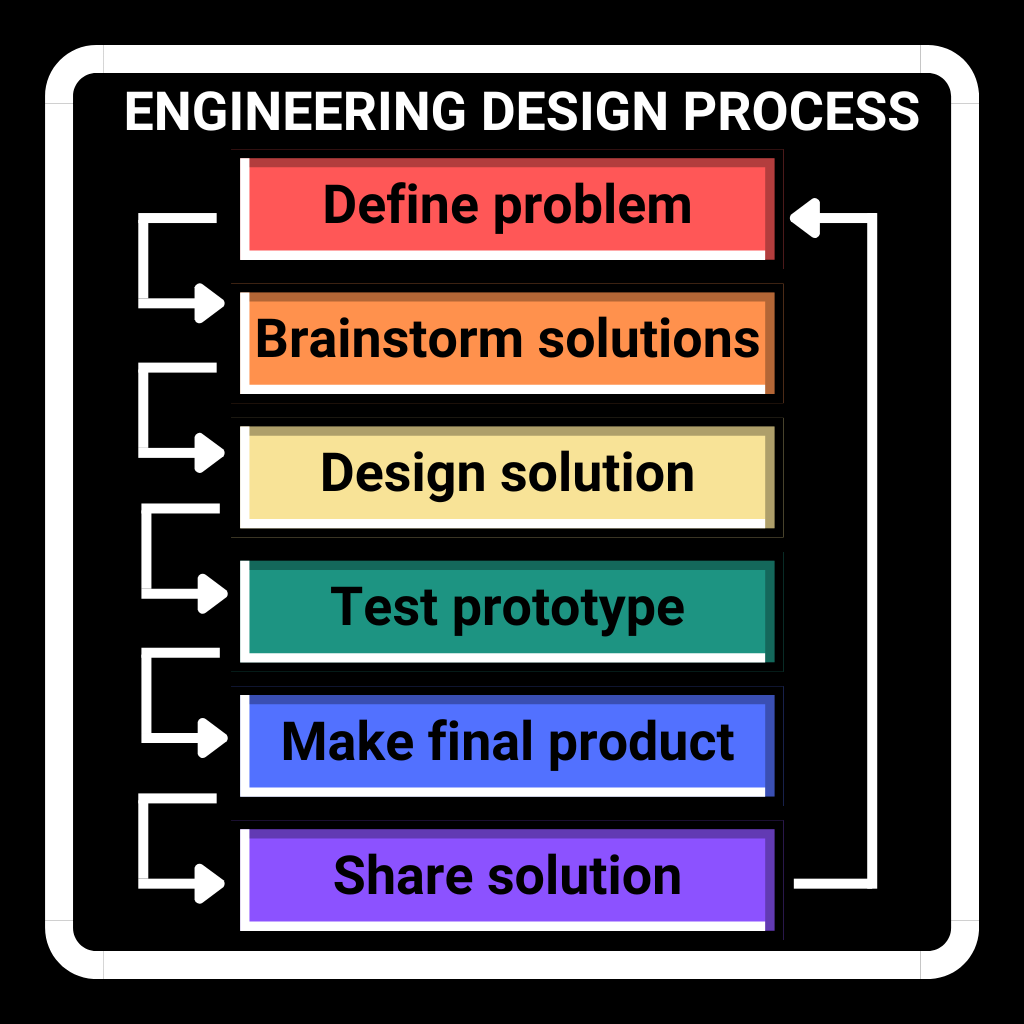 In the engineering design process, we start by identifying a problem and coming up with different ideas to solve it. We then choose the best idea and make a prototype, which is a sample version of the solution. We test the prototype, see if it works well, and make improvements if needed. Finally, we build the final version of the product.
In the engineering design process, we start by identifying a problem and coming up with different ideas to solve it. We then choose the best idea and make a prototype, which is a sample version of the solution. We test the prototype, see if it works well, and make improvements if needed. Finally, we build the final version of the product.
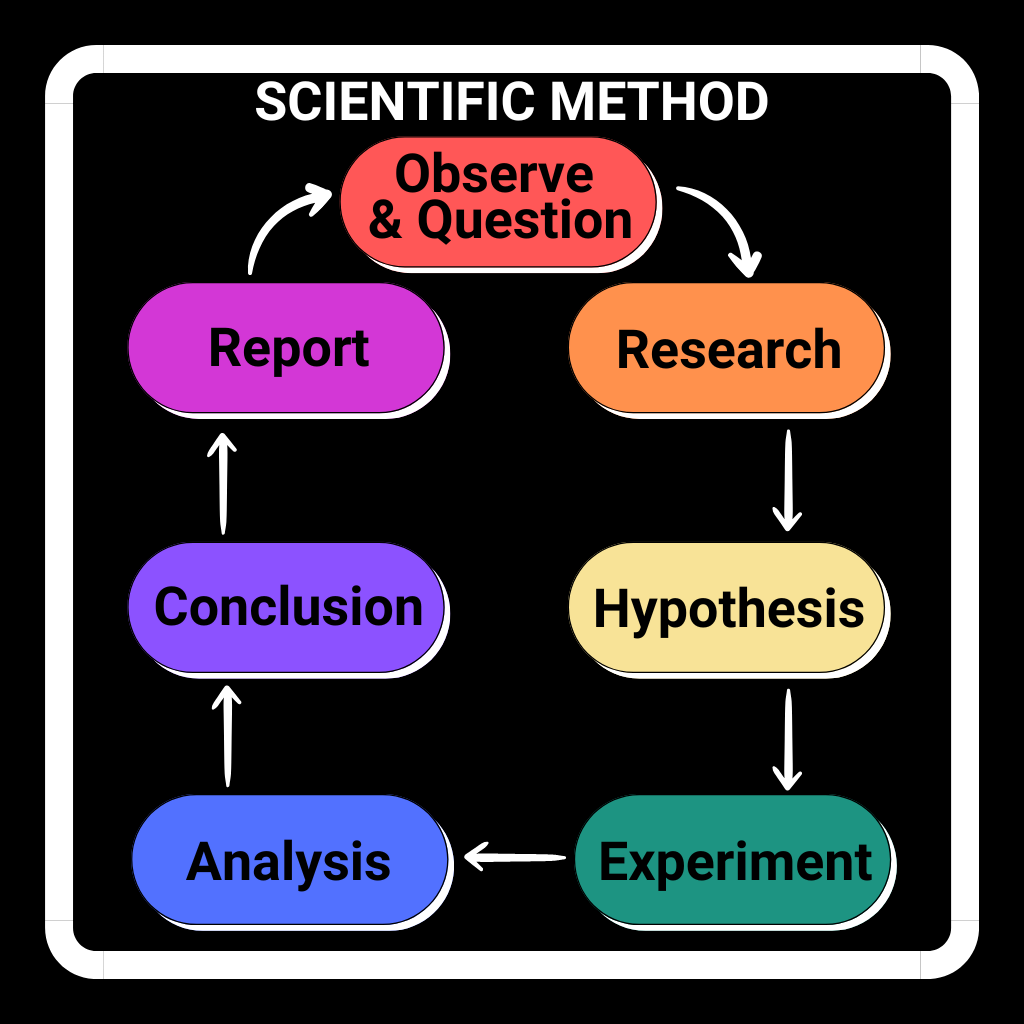 In the scientific method, scientists observe things in the world and come up with explanations called hypotheses. They test these hypotheses by doing experiments, analyzing the results and make conclusions. They may need to do several cycles of experiments to test the hypothesis.
In the scientific method, scientists observe things in the world and come up with explanations called hypotheses. They test these hypotheses by doing experiments, analyzing the results and make conclusions. They may need to do several cycles of experiments to test the hypothesis.
So, engineers design things to solve problems, while scientists try to understand how things work by observing and experimenting. Both processes have steps to help them reach their end goal, but they have different goals and ways of doing things.
The 6 Engineering Design Process Steps
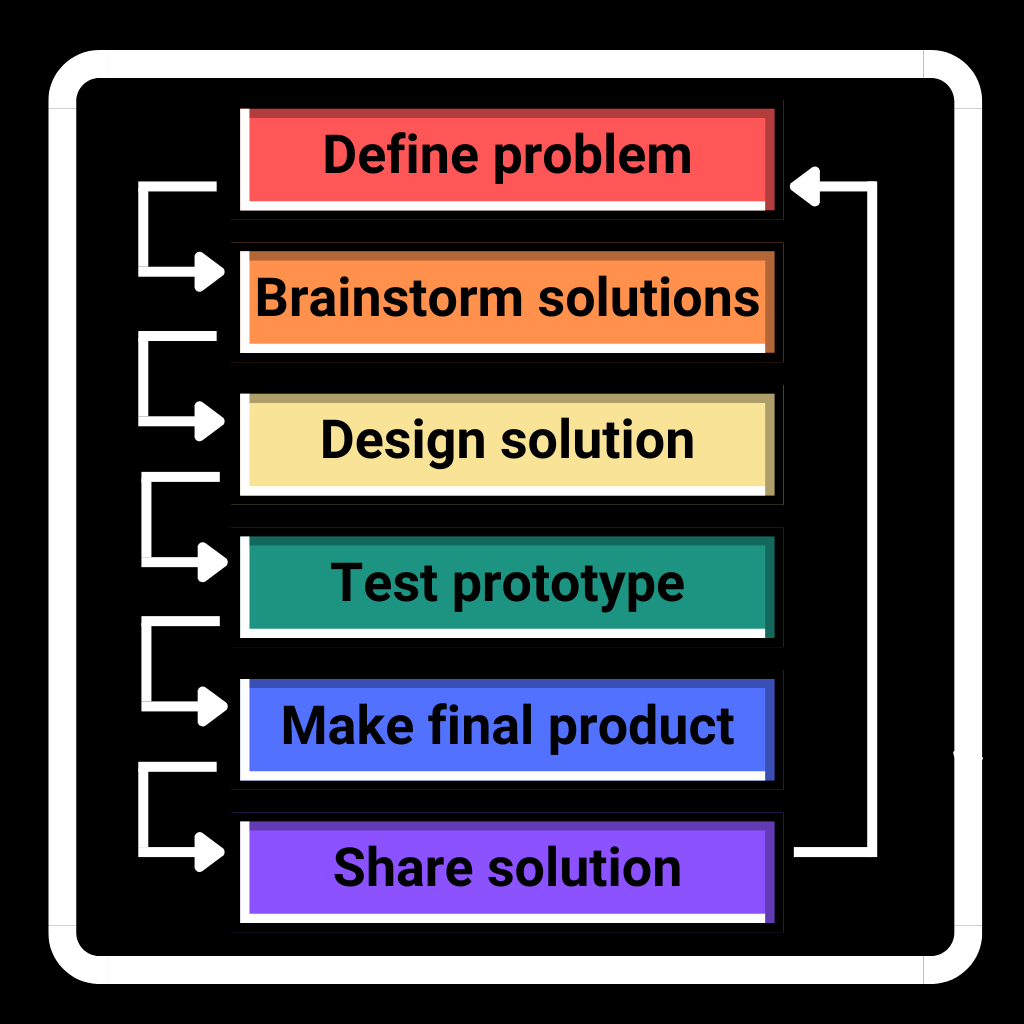 The engineering design process consists of six steps that engineers follow to come up with effective and innovative solutions. The steps of the engineering design process are not fixed, as they can go back and forth as needed
The engineering design process consists of six steps that engineers follow to come up with effective and innovative solutions. The steps of the engineering design process are not fixed, as they can go back and forth as needed
Define the Problem & Requirements
In the first step of the engineering design process, engineers identify a real-world problem and consider the criteria and constraints they need to work with. Starting off with the requirements and design constraints provides clear guidelines for the design process.
Brainstorm Solutions
During the brainstorming phase, engineers brainstorm ideas to develop as many solutions as they can to tackle the identified problem. They brainstorm solutions with different materials and explore various techniques to come up with the best possible solution.
Design Solution
After brainstorming, engineers select the best solution that meets the criteria and constraints. They ask critical questions to ensure the solution can withstand different situations and refine their design to create a prototype, which is a sample version of the final solution.
Test Prototype
Engineers test and analyze the prototype to see if it works effectively. They gather test results, evaluate how well the prototype performs, make changes to the prototype and repeat this through a process called iteration. Iteration helps them make improvements and adjustments to their design, such as considering different materials and techniques.
Make Final Product
Once the prototype has been thoroughly tested and refined, engineers make the final product from the best prototype.
Share solution
Finally, engineers share their final product or solution with others. They present the final design to colleagues or the intended users. Sharing the solution allows for feedback and further improvements.
Engineering Process Example: The Egg Drop Challenge
Let's go through the engineering design process steps with the example of the egg drop challenge to see how it's used! The egg drop challenge is a favorite engineering design activity for elementary and middle school students.
Define the Problem & Requirements
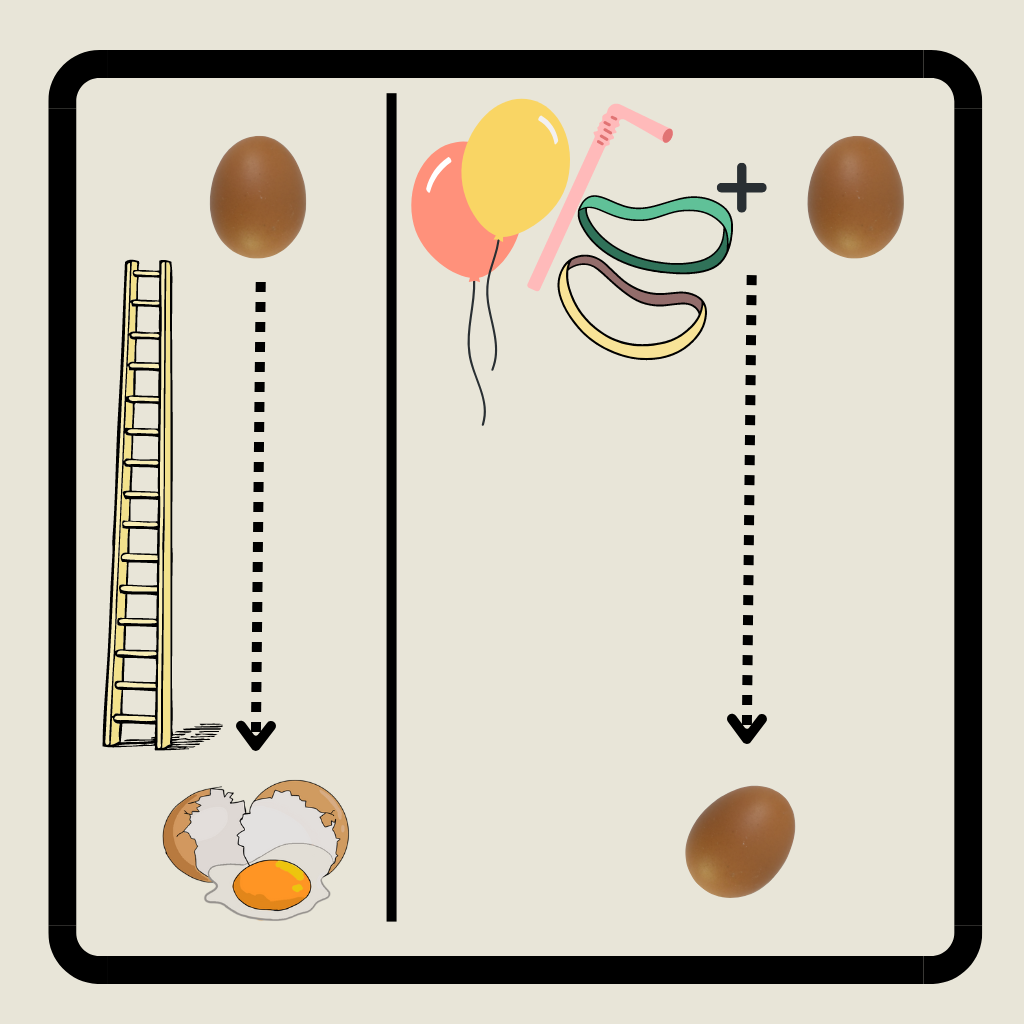 The problem in the egg drop challenge is to protect a raw egg so that when it's dropped from a high distance, it will not crack. The requirements are to use common materials such as balloons, straws and rubber bands.
The problem in the egg drop challenge is to protect a raw egg so that when it's dropped from a high distance, it will not crack. The requirements are to use common materials such as balloons, straws and rubber bands.
Brainstorm Solutions
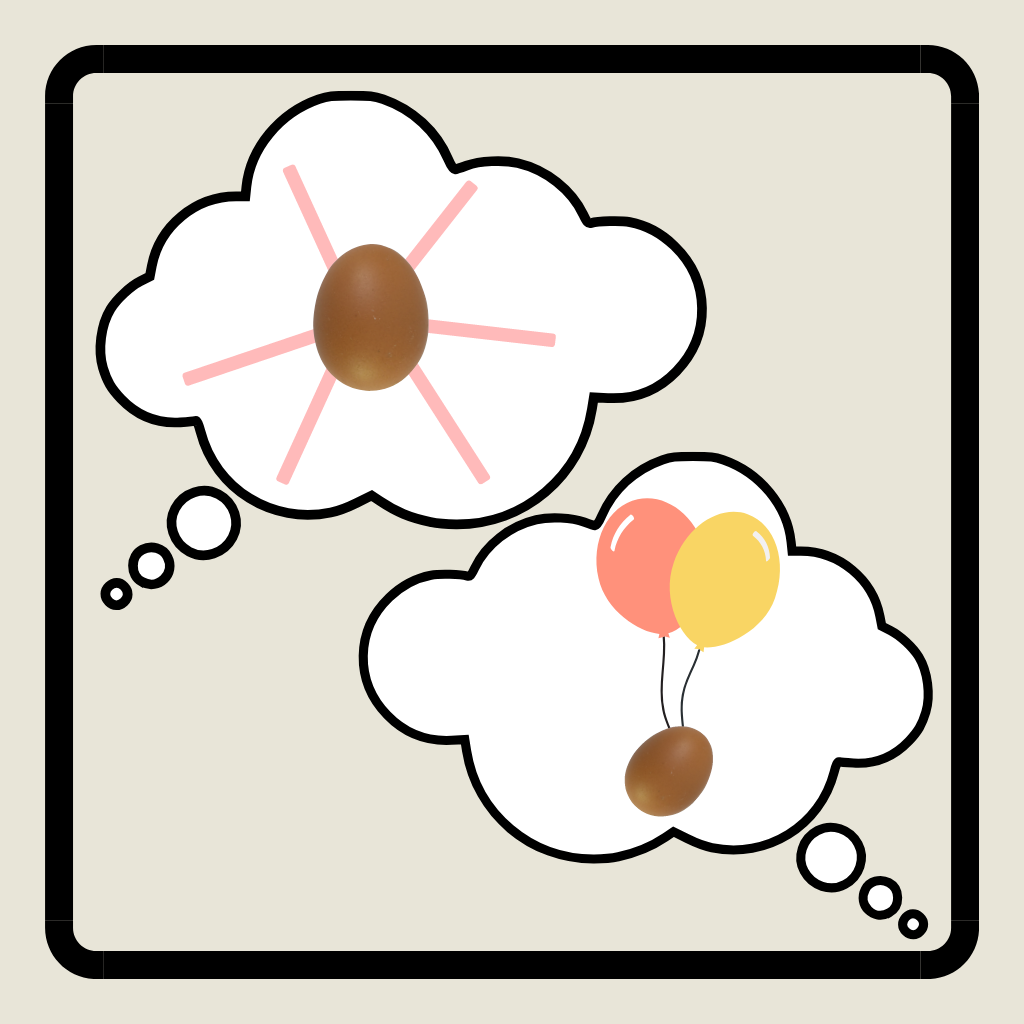 In the brainstorming phase, try to come up with as many ideas as possible on how to protect the egg from a fall. This may involve considering possible solutions to slow down the egg's fall and ways to protect the egg when it hits the ground
In the brainstorming phase, try to come up with as many ideas as possible on how to protect the egg from a fall. This may involve considering possible solutions to slow down the egg's fall and ways to protect the egg when it hits the ground
Design Solution
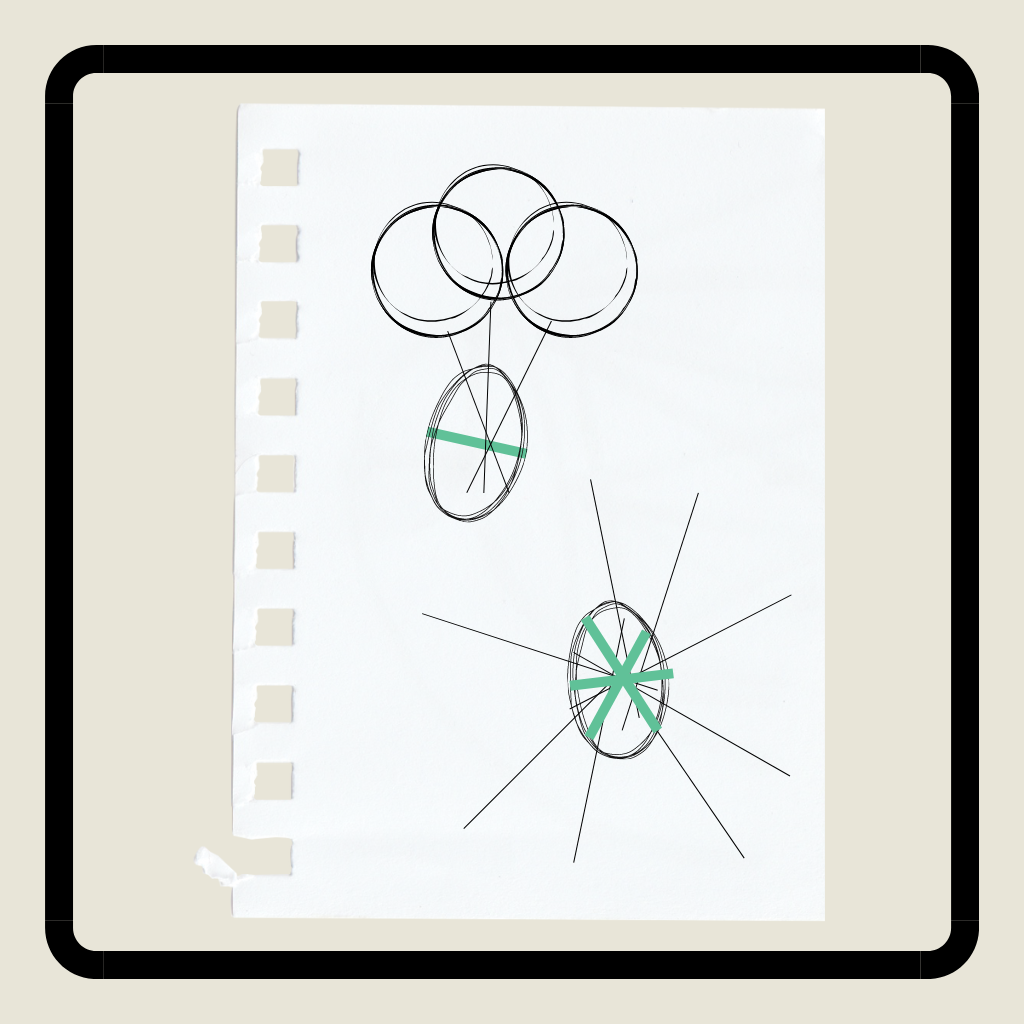 When designing sample solutions, which are also referred to as prototypes, develop ideas from the brainstorming phase by focusing on specific details that will make it possible. In the case of the egg drop challenge, this involves how to build and fasten structures that will protect the egg.
When designing sample solutions, which are also referred to as prototypes, develop ideas from the brainstorming phase by focusing on specific details that will make it possible. In the case of the egg drop challenge, this involves how to build and fasten structures that will protect the egg.
Test Prototype
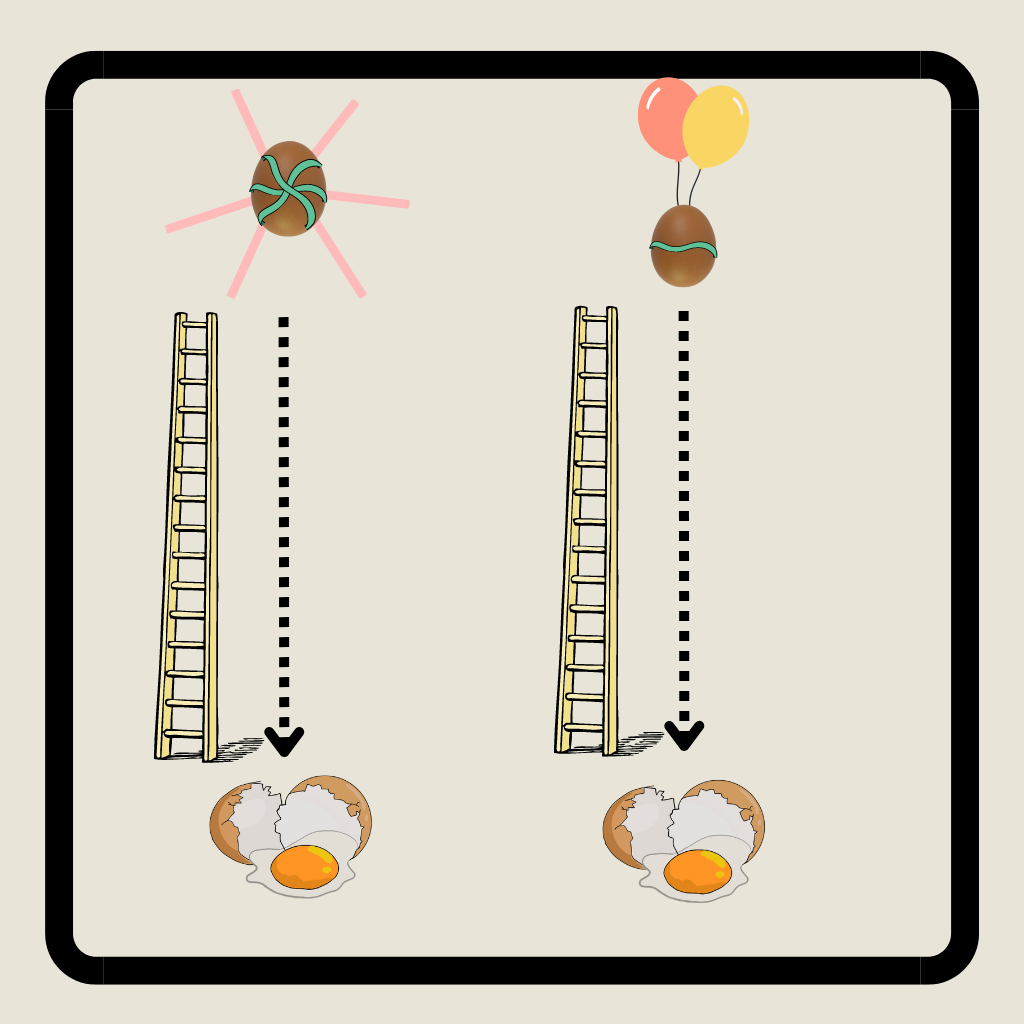 Once the prototype is designed, make and then test the prototype. Does the egg remain intact after the prototype is dropped? If the egg breaks, find out why the egg broke. With this information, return to brainstorming solutions or refine the prototype design to avoid the identified problem.
Once the prototype is designed, make and then test the prototype. Does the egg remain intact after the prototype is dropped? If the egg breaks, find out why the egg broke. With this information, return to brainstorming solutions or refine the prototype design to avoid the identified problem.
Make Final Product
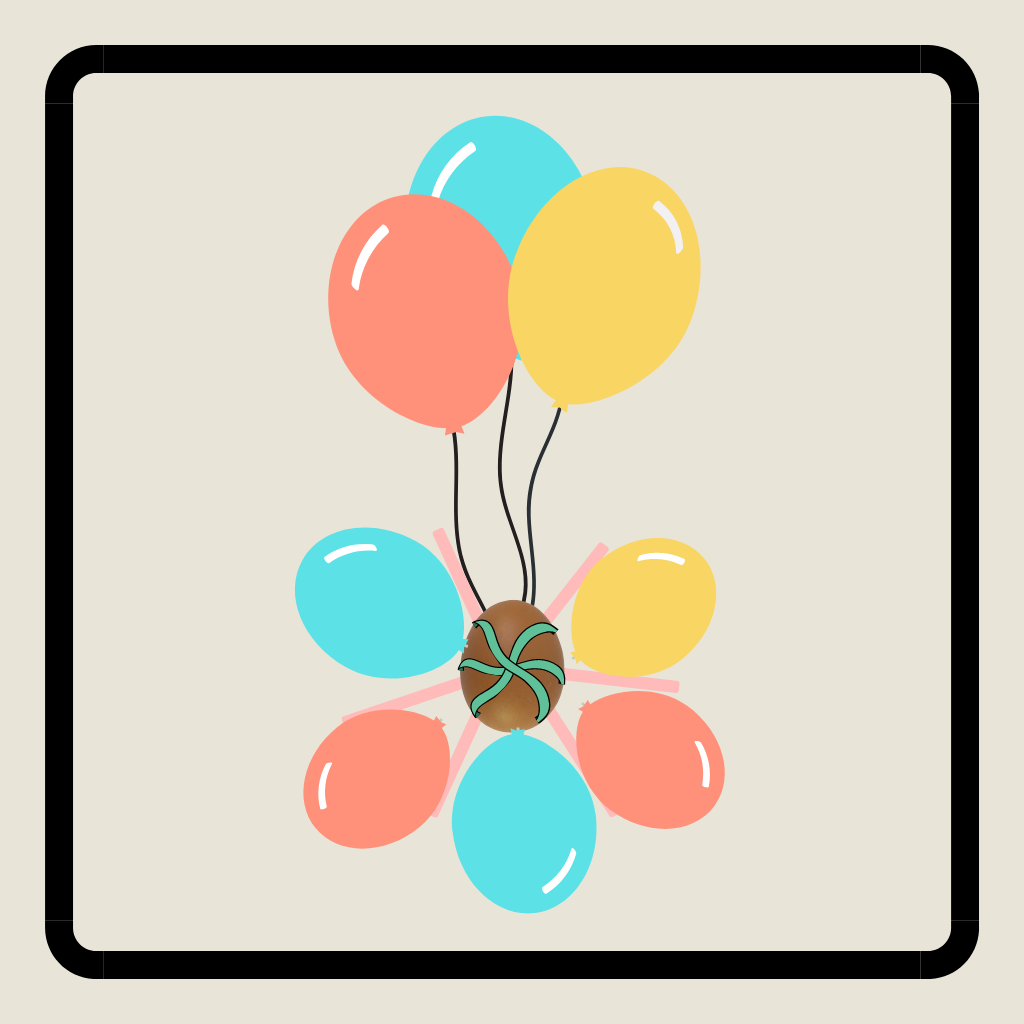 After several rounds of improving the prototype, it's now time to create the final product! In the case of the egg drop project, this may involve combining several prototypes to make the best structure to protect the egg.
After several rounds of improving the prototype, it's now time to create the final product! In the case of the egg drop project, this may involve combining several prototypes to make the best structure to protect the egg.
Share solution
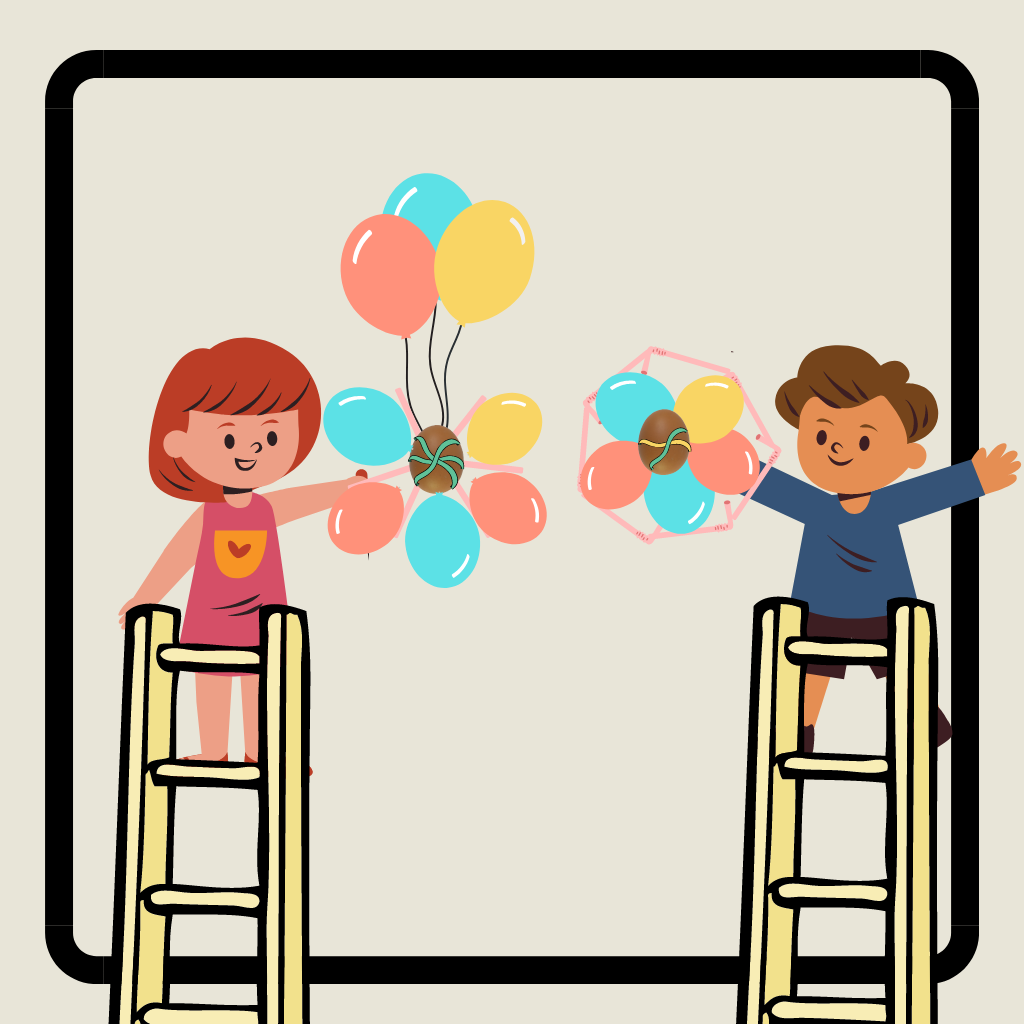 Now that you have the final solution, it's time to share your egg drop contraption with others! In a challenge, you'll see the creative ways people have come up with to protect the egg. This will give you new ideas to improve your future egg drop design!
Now that you have the final solution, it's time to share your egg drop contraption with others! In a challenge, you'll see the creative ways people have come up with to protect the egg. This will give you new ideas to improve your future egg drop design!
Engineering Challenge Projects
 An engineering challenge is a fun hands-on activity that is suitable for elementary school to high school students. It serves to enrich STEM education or can be used as a science fair project. By participating in such challenges, students learn how to apply the engineering design process to design solutions with simple materials. This project-based learning activity builds a solid foundation for problem-solving using the engineering design process. Moreover, when engineering challenges are done as a group, students learn the importance of collaboration and teamwork in finding solutions to problems.
An engineering challenge is a fun hands-on activity that is suitable for elementary school to high school students. It serves to enrich STEM education or can be used as a science fair project. By participating in such challenges, students learn how to apply the engineering design process to design solutions with simple materials. This project-based learning activity builds a solid foundation for problem-solving using the engineering design process. Moreover, when engineering challenges are done as a group, students learn the importance of collaboration and teamwork in finding solutions to problems.
Here are a few examples of engineering design challenge projects suitable for students of all ages!
Explore the science of flight by designing and launching paper airplanes. Test different types of paper, folds, and launches to discover the secrets of maximum flight distance.
Egg Drop Project: Protect the Egg!
How can you keep a raw egg from breaking when dropped from a high place? In this project, you will use household materials to create a contraption that will protect an egg from breaking when dropped. Will your design work?
Water Strider Challenge: Make a Bug Walk on Water!
Get ready to be amazed as you create your own insect that can walk on water. Water striders are able to do this thanks to their hydrophobic legs and high surface tension of water. The experiment will challenge you to use the engineering design process to identify the problem, prototype, test, and improve your water strider.
Explore more STEM challenges!
Engineering Projects for Students
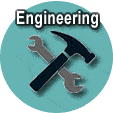 Engineering is all about solving problems using science and math. Apply the engineering design process to engineering science fair projects covering aerodynamics, building, construction, electronics, materials science and more!
Engineering is all about solving problems using science and math. Apply the engineering design process to engineering science fair projects covering aerodynamics, building, construction, electronics, materials science and more!
Aerodynamics science fair projects
Building and Construction science fair projects
Electronics science fair projects
General Engineering science fair projects
Materials Science science fair projects
Transportation science fair projects
More from Science Fair Coach
Introduction to Science Fairs
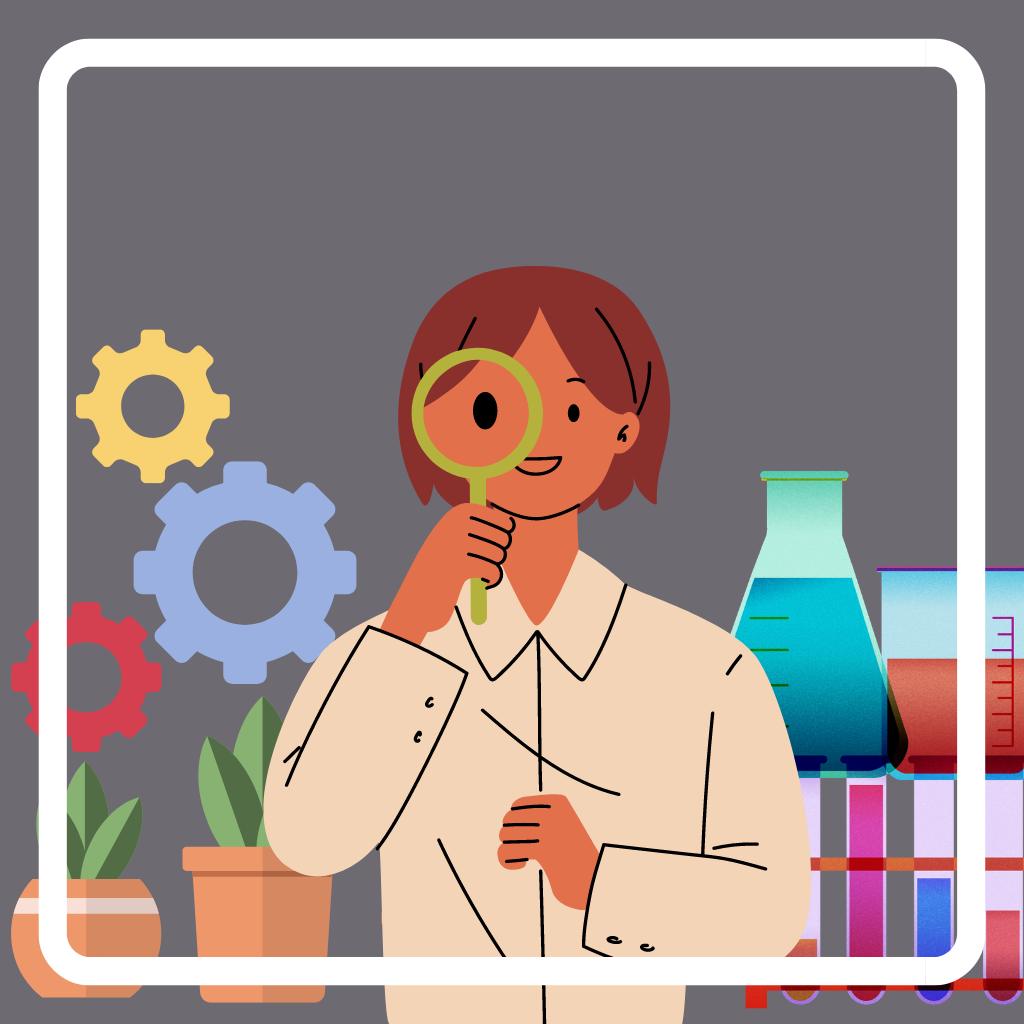 Discover the advantages of science fair projects, explore different science project types, and learn how to find and do a science fair project.
Discover the advantages of science fair projects, explore different science project types, and learn how to find and do a science fair project.
Science Fair Poster
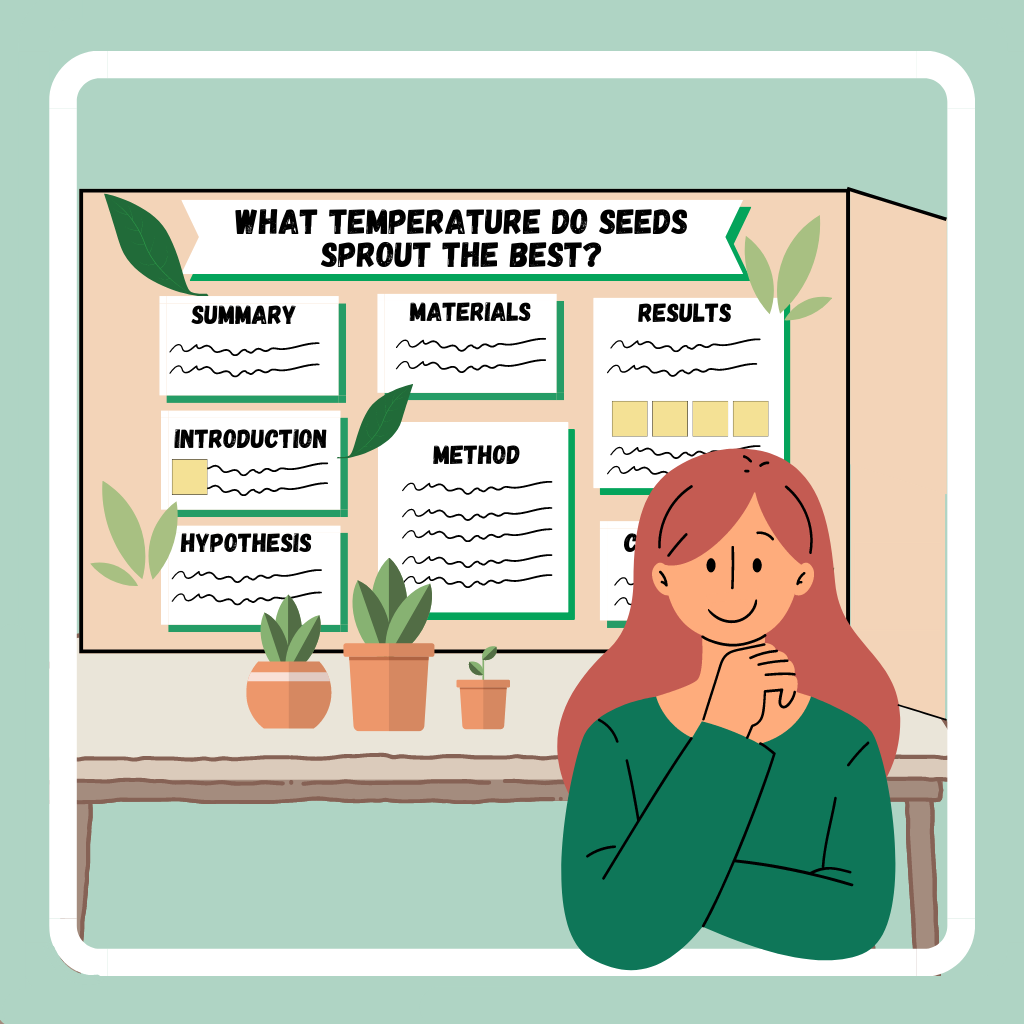 Follow our step-by-step guide to design and create an eye-catching poster that effectively displays your science fair project!
Follow our step-by-step guide to design and create an eye-catching poster that effectively displays your science fair project!
The Scientific Method
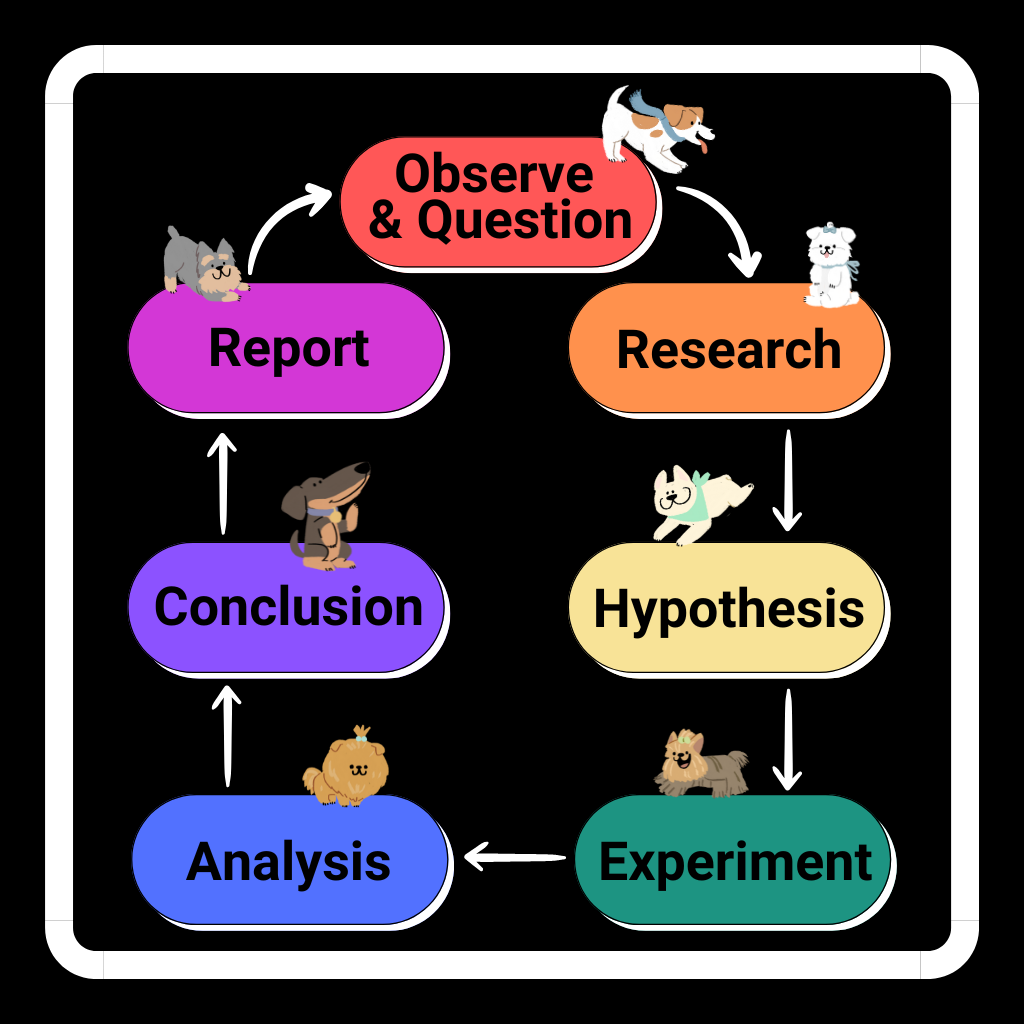 Gain an understanding of the 7 steps of the scientific method to learn how nature works, its application in a real-world example, and its historical evolution as a systematic approach to scientific investigation.
Gain an understanding of the 7 steps of the scientific method to learn how nature works, its application in a real-world example, and its historical evolution as a systematic approach to scientific investigation.
